- Two distinctly different EVs with plenty of range and performance
- Accessible pricing starts in the low $40,000 range
- Edmunds testing reveals key differences in personality
TESTED: 2022 Hyundai Ioniq 5 vs. Kia EV6 - Which One Is Right for You?
The first purpose-built EVs from Korea point to a very bright future
Hyundai and Kia aren't exactly new to the electric vehicle game, as both companies have produced some electric cars that were based on existing gasoline-powered vehicles. But 2022 marks the turning point for both with the introduction of their first dedicated EVs. For Hyundai, it's the Ioniq 5 and for Kia it's the EV6.
Am I Ready for an EV?
- EV ownership works best if you can charge (240V) at home or at work This typically means a 240V home installation, but you could also have a similar setup at your office or other places your car is already parked for several hours each day. Don't expect a regular household outlet (120V) to suffice unless you've got a plug-in hybrid, in which case overnight charging at home is feasible.
- If you can’t charge at home, charging at a charging station could take at least 10x longer than at a gas station With public charging infrastructure still in its infancy, the user experience can be maddeningly inconsistent. Tesla owners tend to rave about the reliability and speed of the company's proprietary Supercharger stations, but rival DC fast options have thus far been plagued by technical issues and overcrowding. It's an evolving landscape and our best advice is to do your research on the available options for the EV you want to buy.
- Adding a 240V home charging system could cost up to $1,600 or more If your existing electrical service can handle the additional demands of EV charging, you may be able to add Level 2 charging at home for less than a grand, including installation. But your costs will multiply if you need to upgrade your electrical panel or add a dedicated circuit.
The Ioniq 5 and EV6 share basic componentry and are comparably priced for the amount of features you get. Not surprisingly, the Hyundai and Kia have a lot in common in regard to battery size, range and performance, but there are some key differences between them that could determine which is the best fit for you. We also took both cars to the Edmunds test track to see how they performed — keep scrolling to find out.
2022 Hyundai Ioniq 5
How are the Hyundai Ioniq 5 and Kia EV6 similar?
Pricing stays fairly consistent between the Hyundai Ioniq 5 and Kia EV6. The Ioniq 5 will have a starting price of $40,925 when the entry-level SE Standard Range model goes on sale this spring. It will have a 58-kWh battery pack good for an estimated range of 220 miles, plus a single electric motor driving the rear wheels with 168 horsepower. The Kia EV6 Light has a starting price of $42,115, an estimated range of 232 miles and 167 hp.
Further up is the Ioniq 5 SE at $44,895. It upgrades to a larger 77.4-kWh battery pack, increases power to 225 hp and boasts an estimated range of 303 miles. The Kia EV6 Wind will cost $48,215 and have an identical power output, but estimated range increases slightly to 310 miles. Note that these numbers are for the standard rear-wheel-drive layout; a dual-motor configuration can be specified at extra cost. The fancier Ioniq 5 SEL adds a number of features on top of the SE and has no direct equivalent in the EV6 lineup.
For this comparison, both Hyundai and Kia sent us the current top trims in dual-motor form with that second motor powering the front wheels, providing all-wheel drive and superior acceleration. Our Hyundai Ioniq 5 Limited with all-wheel drive has a sticker of $55,920, while the Kia EV6 GT-Line with AWD has an as-tested price of $58,105. Both cars pump out a healthy 320 hp, but the EV6 again enjoys a slight range advantage of 274 miles compared to the Ioniq 5's 256-mile estimate. As of this writing, both are still eligible for a $7,500 federal tax credit.
2022 Kia EV6
How do the Hyundai Ioniq 5 and Kia EV6 drive?
At the Edmunds test track, both the Ioniq 5 and EV6 test cars turned in identical acceleration times of 4.7 seconds to reach 60 mph. As is the case with most EVs, the Hyundai and Kia benefit from immediate and impressive acceleration, but that's where the similarities end.
The Hyundai Ioniq 5 favors ride comfort while the Kia EV6 is biased toward handling performance. The Ioniq 5's suspension tuning is noticeably softer and does a better job at smoothing over ruts and bumps in the road. The EV6's suspension is much firmer and feels more at home on a twisty road and in the hands of a spirited driver. For drivers seeking some excitement and sporty handling, the EV6 is the easy choice. Those who desire a smooth and comfortable ride will naturally gravitate toward the Ioniq 5.
It's worth noting that a high-performance Kia EV6 GT is expected at the end of this year or the beginning of 2023. Initial information points to it having 576 hp and a blistering 0-60 mph time of only 3.5 seconds, which should enable it to give the Tesla Model Y Performance and Ford Mustang Mach-E GT a run for their money.
2022 Hyundai Ioniq 5
How are the Ioniq 5 and Kia EV6 interiors?
In keeping with their respective exterior designs, the Ioniq 5's interior goes with a funky and fresh style compared to the EV6's more conventionally sporty cabin. The materials used are praiseworthy, though the Hyundai gets a slight edge for its more liberal use of soft-touch surfaces compared to the EV6's hard plastic elements. There's plenty of space for adults in any seat, but taller drivers may desire a bit more extension from the telescoping steering wheel. As it is, they may feel as though they need to scoot their seat closer to the dashboard than they prefer.
The Ioniq 5 features a sliding console between the front seats, giving owners a bit more flexibility for personal-item storage, but it also creates a flat floor between the driver and passenger side, so smaller items could roll under the pedals and get lodged there. The EV6 goes with a more conventional fixed center console and doesn't have this issue, but it also doesn't have as much space or versatility. We do like the placement of the wireless charging pad on top — in comparison, the Ioniq 5's pad is buried deeper in its console.
Behind the rear seats, the Ioniq 5 can accommodate up to 27.2 cubic feet of cargo, which is less than the Tesla Model Y or Ford Mustang Mach-E. The EV6's cargo capacity is even smaller at 24.4 cubic feet, making it one of the smallest in the class. Unlike the Ford or Tesla, neither the Hyundai nor Kia features a usable front trunk, or frunk. You could coil up a charge cable in the shallow tray up there, but not much else.
2022 Kia EV6
What about technology features?
The infotainment systems in the Kia and Hyundai are similar in many ways. Both have similar features, are relatively quick to respond, and have menus intuitive enough that you'll never have to consult the owner's manual. The Ioniq 5 has some physical shortcut buttons for some commonly used functions, but those buttons can be difficult to read in direct sunlight. The EV6 takes a more novel approach with a multifunction panel of capacitive touch buttons that can be switched between navigation and audio or climate controls. We prefer either of these approaches over the trend of having all features in the touchscreen menus, though the EV6 gains a slight advantage for its greater selection of available buttons.
Charging capabilities are of course paramount for the EV shopper, and the good news is that both of these models are capable of DC fast charging at up to 350 kW. That means you can charge from 10% to 80% capacity in only 18 minutes. As we've discovered, those fast chargers are rare and many don't operate anywhere near those levels. But Hyundai sweetens the deal by offering free 30-minute charge sessions for the first two years of ownership.
Both the Hyundai and the Kia also offer an external power adapter that plugs into the main charge port. It allows you to power a number of accessories or appliances and even come to the rescue of other EV drivers who ran out of juice. Just keep in mind that the charge rate will be oppressively slow.
In terms of advanced safety and driver assist aids, both the Ioniq 5 and EV6 come standard with all of the typical features expected of any new vehicle. In our time driving both, false alarms were pleasantly absent and everything seemed to function just as it should. We're not fans of the sideview images projected into the instrument panel to alert the driver to blind-spot incursions, though. We prefer the conventional lights and beeps to the camera views that can be more distracting at night and obscured by the steering wheel itself.
Edmunds says
The 2022 Hyundai Ioniq 5 and Kia EV6 are two of the best electric SUVs you can get today. If you're looking for something funky and comfy, the Ioniq 5 is as good as it gets. If you're seeking a healthy dose of performance and fun, the EV6 will certainly satisfy.
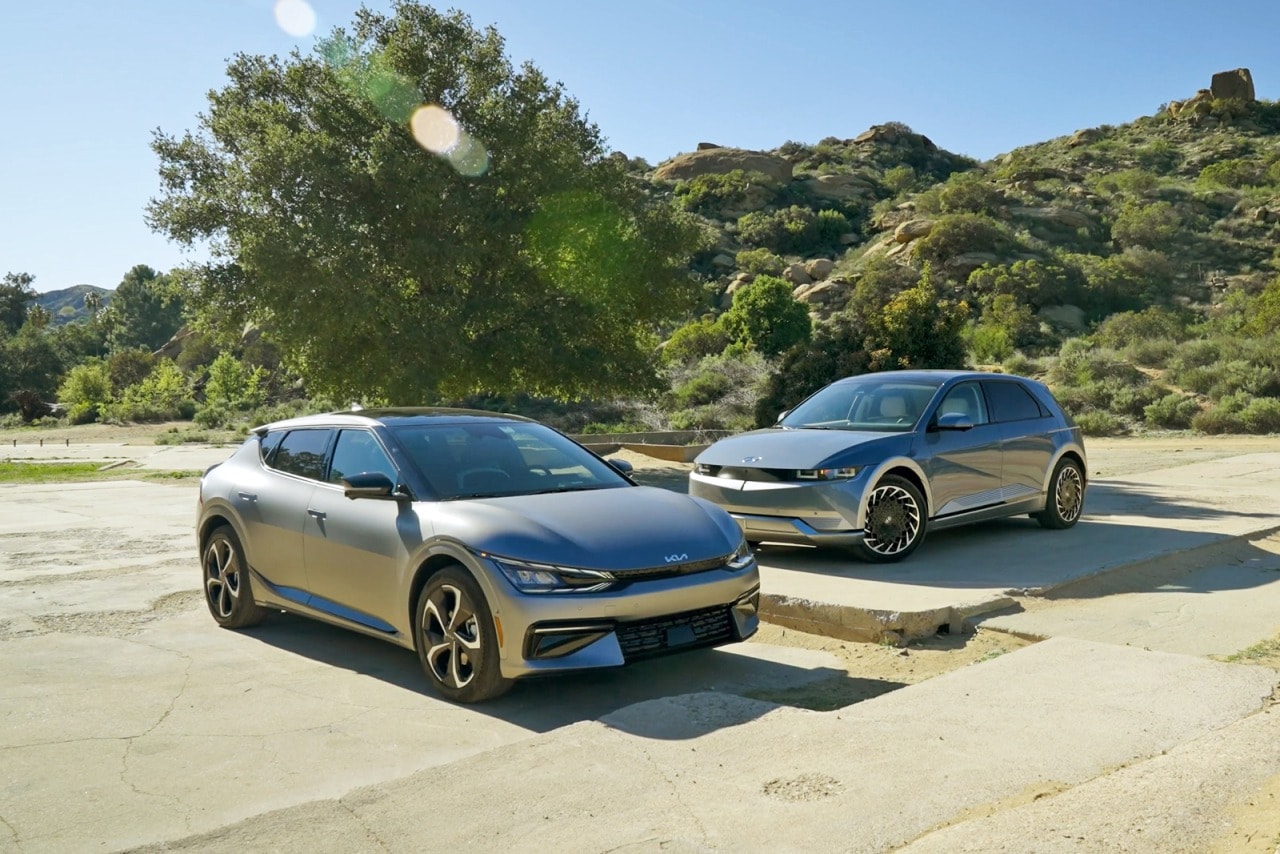
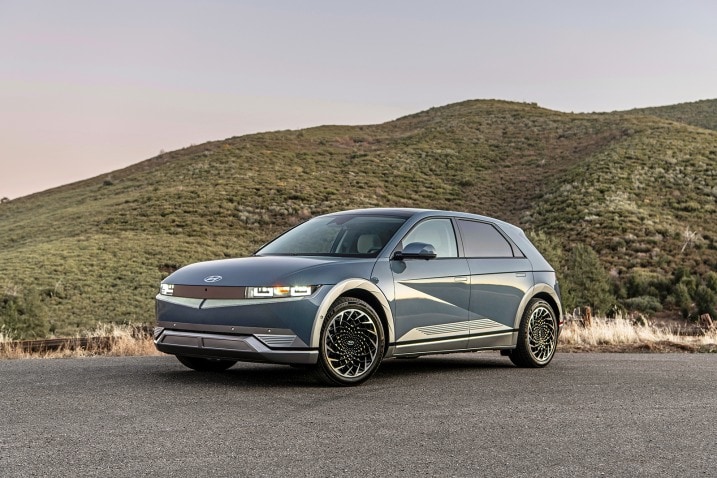
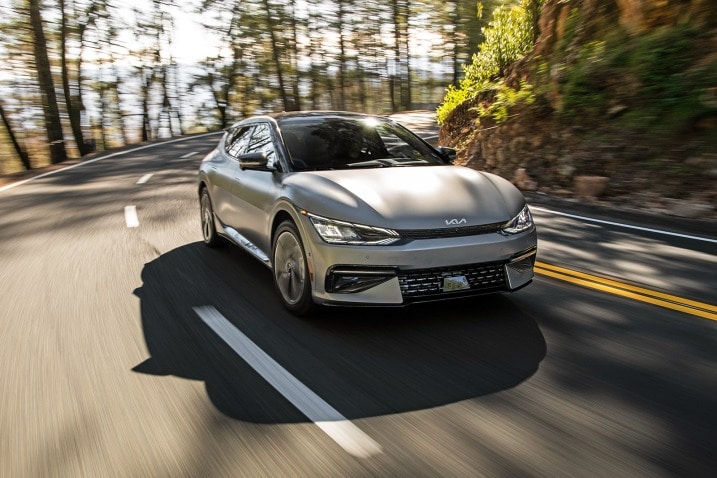
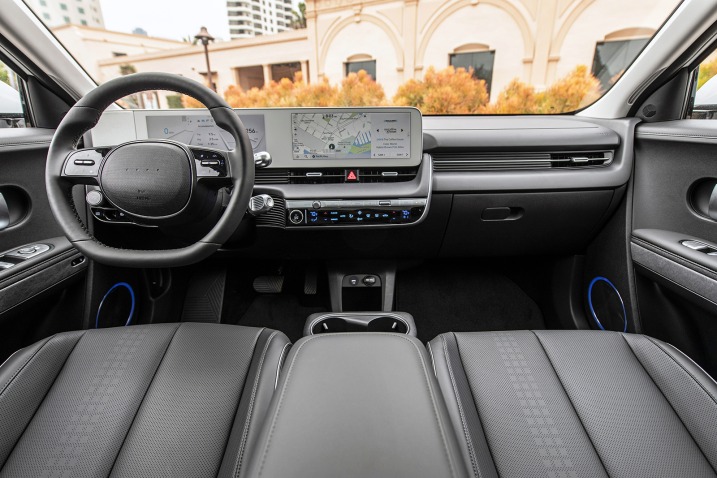
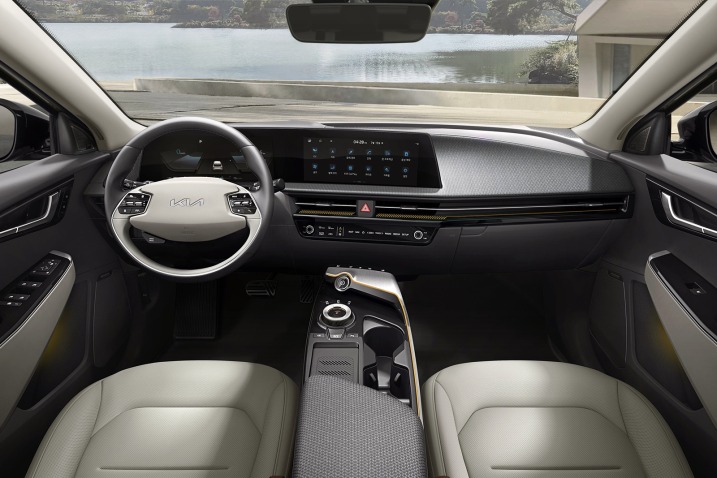
 by
by 


